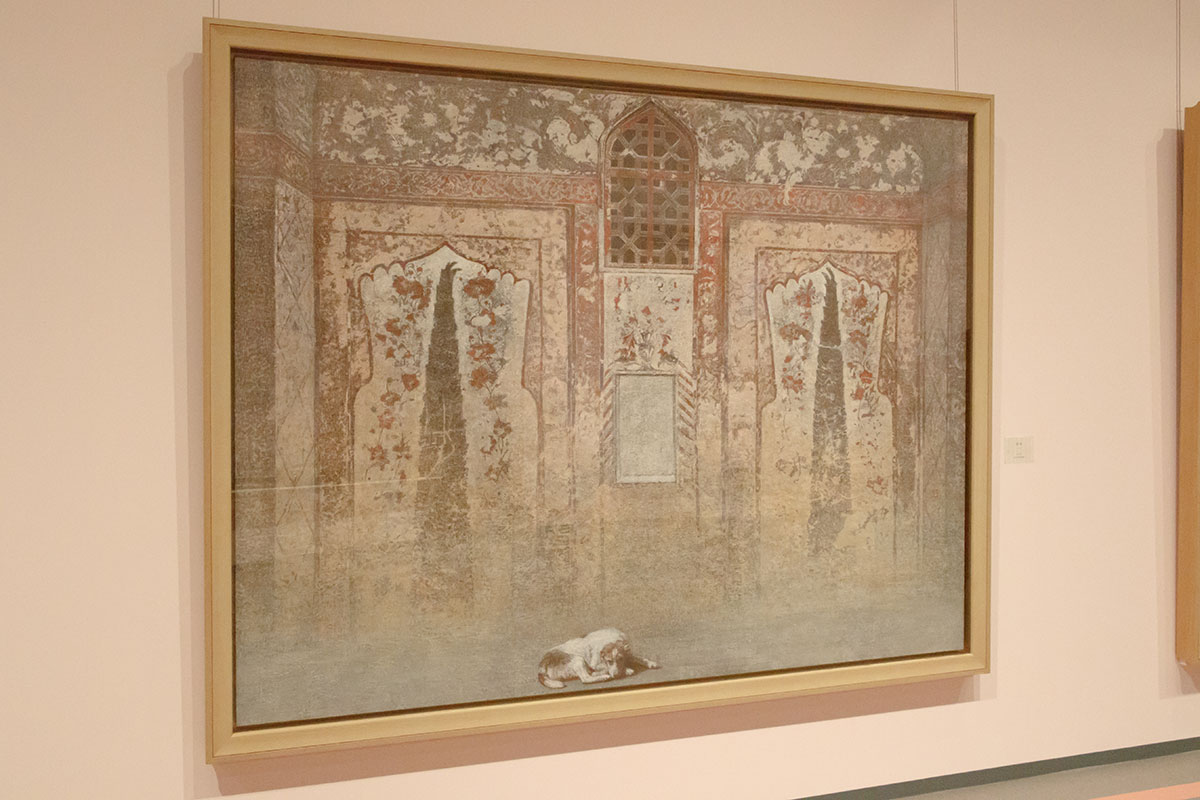
“Mamiaki Masaaki exhibition of the booth” is being held at the Tokyo University of the Arts University Art Museum from 4th January 2018 (Wednesday) to 17th January (Wednesday).
Since a press coverage was held on January 4th, I will tell you the state of the exhibition.
Mr. Miyakami Miakami, who looked at nature and humans with a modern sense and a distinctive point of view and drew it with classical technique of back painting. In recent years, I have held personal exhibitions in Russia, Hungary, Portugal and other countries as paintings beyond the framework of Japanese paintings and continues to be active in many countries around the world.
In addition, since September last year, at the Tokyo National University of the Arts, Art Museum, “The Transcendental Consciousness – Clone Cultural Property Revitalization” has been planned, including “Clone Cultural Property” and other artistic outbreaks We have innovated to society.
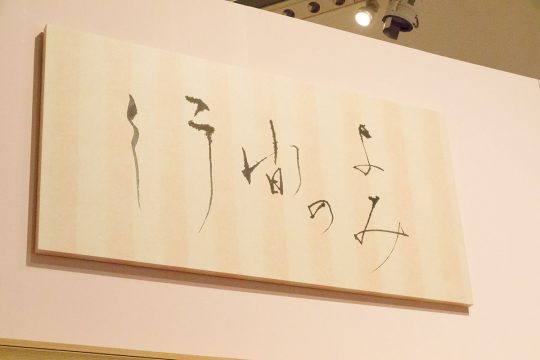
This exhibition will be held at Mr. Miyako’s department of professor at Tokyo National University of Fine Arts and Science and will hold about 70 works from graduation production to recent works in recent years and works drawn for this exhibition The largest retrospective It will be an exhibition.
Venue landscape
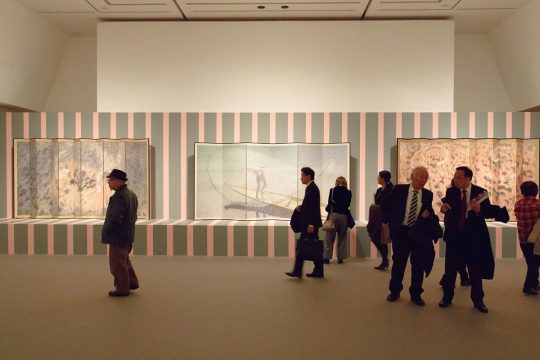

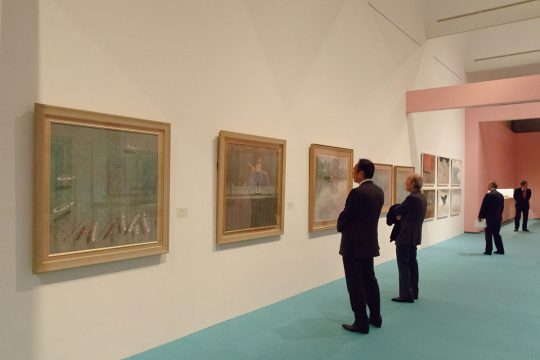
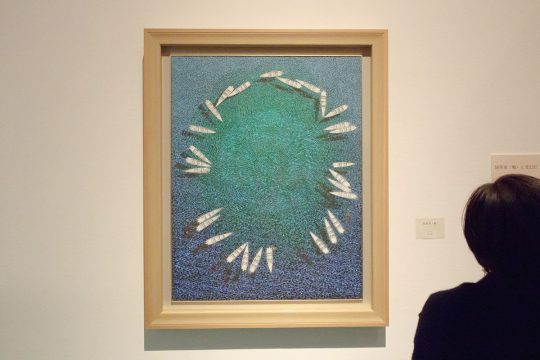
The venue where a total of 70 works were exhibited. Especially the way of the way etc. is not shown, it is “opened” like a corridor which continues indefinitely. A work group painted from a different angle from a traditional Japanese painting, its modernity and uniqueness leaves a strong impression on the viewer.
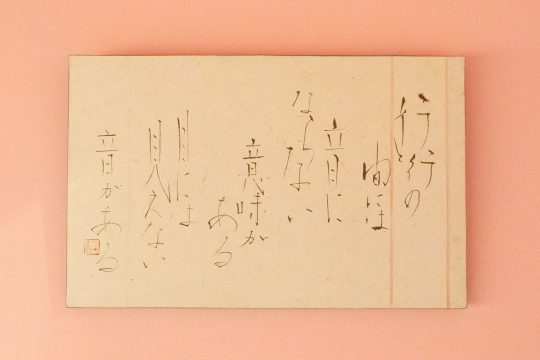
Mr. Miyamaki’s words are also impressive, such as “helix”, “going beyond the spacetime of time”, “back”. In particular, “Tables and Ulla” means that they are especially important words. Honno and Tate Maaye, Halle and Ke, things are made up of two contradictory elements. It is a unique philosophy rooted in the climate of Japan.
And the idea of “Table and Ura” is tied to the actual coloring technique.
Nanhai Character / 1989

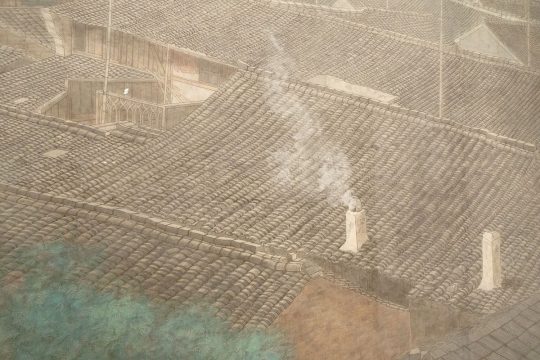
Mr. Miyaki, who studied conservation and restoration technology of Japanese paintings at graduate school, encounters the classical technique called “reverse coloration” there. The technique of drawing from the front and back of a thin painting silk was common until the Edo period, but it was a forgotten technique in modern Japanese paintings stacking paint on washi like oil paintings. Mr. Miyagi introduced this back painting into his work, and created a thin Japanese painting but a deep Japanese painting.
Yellow selling / 1999

“Although it is a sight that is certainly possible, the vision that never appears in our eyes is created by the brush of the Miyagi, and made me believe that it is reality” (Mr. Masato Aoyanagi, Professor Emeritus of the University of Tokyo)
Oriental motifs appear frequently in Mr. Miyakoda’s works such as Islamic mosques and silk road scenery. Is this also a view of the street corner of Asia? Scenes and people without name, drawn in the picture. But why do you feel it fond of somewhere?
Water fireworks / 1998
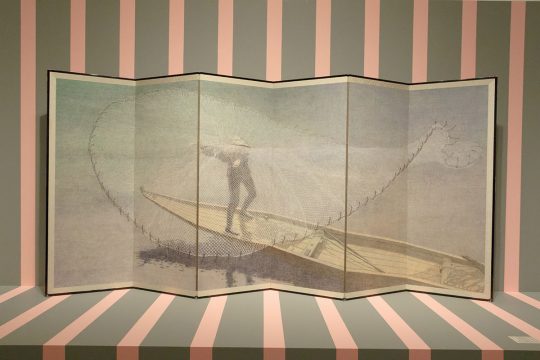
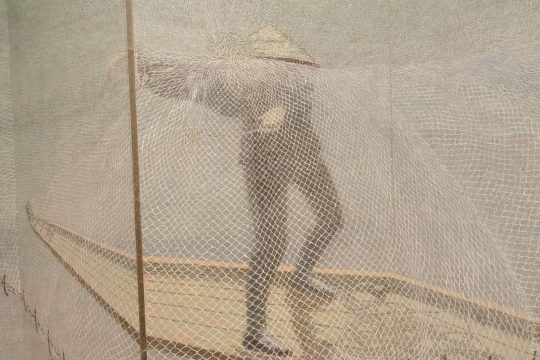
Mr. Miyuki sometimes depicts not the emotionally Japanese scenes at first glance but by the rational structure such as color and form.
In particular, there seemed to be something fascinated by the universal shape “spiral”. Miyagi said that each actor admired the pine needle which twists twistedly and distributes the force, “The creation act also shares a vector of nature and a spiral.”
This work is one of the masterpieces “water fireworks”. The dot net is forming a fish and I feel a sense of fun.

Mr. Miyako who explains in front of the work
Mr. Miyako says, “Back painting is a symbol of Japanese culture looking into the heart.”
Originally, the word “Ura” means “heart”. It was a word symbolizing spirituality like heart and feeling.
Also, it was interesting to point out that the back coloring is also linked to animation layers and cell drawing techniques. It may be that we Japanese have always inherited the technique of painting from ‘Ura’ to ‘Omoi’.
The session will be until January 17, 2018 (Wednesday).
“This large-scale exhibition in Japan may be the last in this time,” said Miyamichi himself’s present exhibition.
Why do not you come and take a look.
The summary is here:
https://home.ueno.kokosil.net/en/archives/20734


